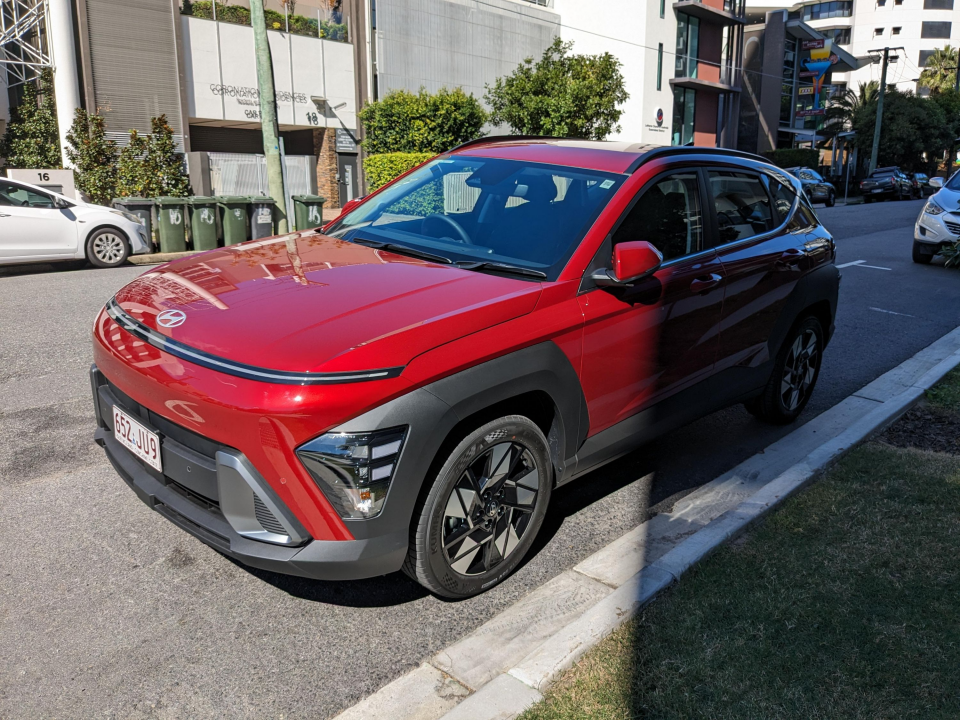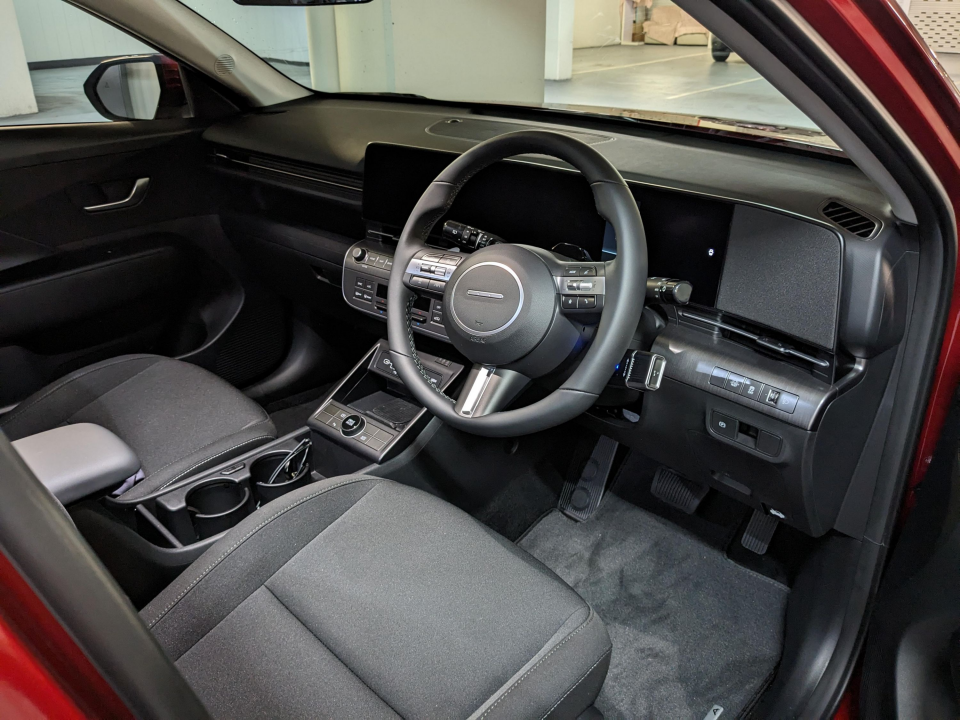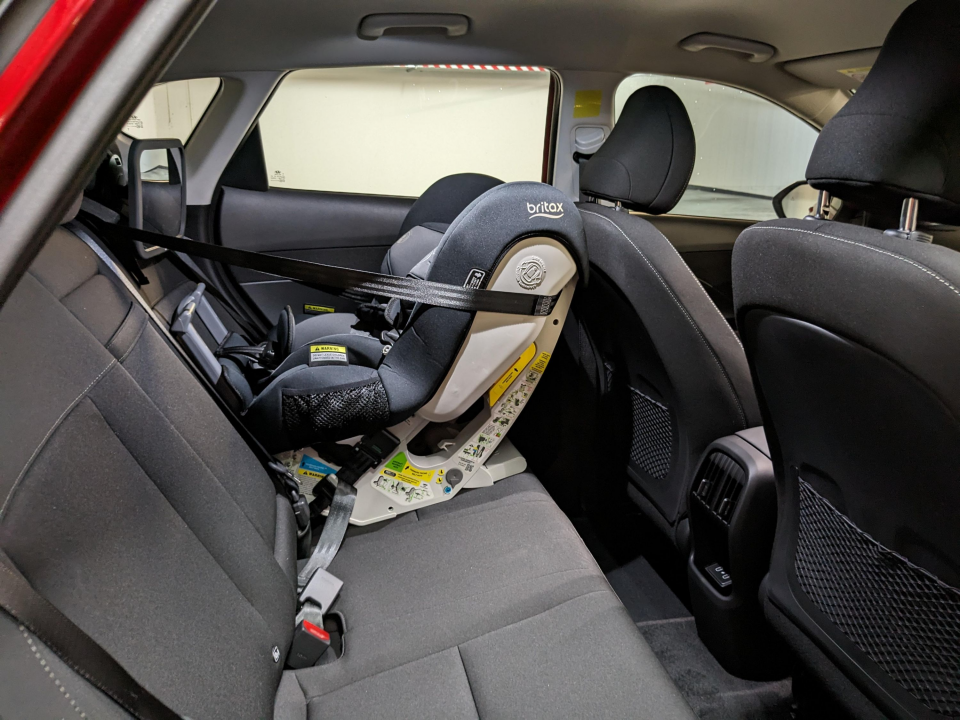

CarExpert.com.au
The CarExpert team's favourite cars of 2025
3 Days Ago
H. K. purchased a Hyundai Kona Hybrid after owning Mazdas for over a decade and wanting to go petrol-electric.



Quickly see how this car stacks up against its competition. Select any benchmark to see more details.
Take advantage of Australia's BIGGEST new car website to find a great deal on a Hyundai Kona.
H. K. purchased this Hyundai Kona new for $36,705 (including all on-road costs). H. K. would buy this car again because: “The Hyundai Kona Hybrid in base spec is good value, well-equipped and practical. As an owner of Mazdas for the past 11 years the decision to move away from the brand was largely driven by the lack of hybrid options in the Mazda range (outside of the e20 CX/MX-30 variants, which were a bit ambitious in their claims to be a hybrid).

Before deciding to purchase the Kona, I’d been looking for a hybrid vehicle having only previously owned ICE vehicles. While rising fuel prices were a slight issue, I mainly wanted a hybrid to minimise my impact on the climate where possible.
An EV was unfortunately not an option due to the lack of charging infrastructure in my apartment block. I’d recently driven a BMW iX3 (as a rental) and loved it. The iX3 is an exceptionally good value car but beyond my price range. In terms of other EV options, I can’t look past the behaviour and politics of its CEO to ever own a Tesla and I’m not too fond of some of the other more affordable EV options (though admittedly have never looked at a BYD, which may change my mind).
Other factors affecting the purchasing decision were the need for additional space for a growing family (compared with previous hatches), which is why all the options I looked at were small SUVs.
I’d initially planned to purchase the hybrid Honda HR-V, having really enjoyed my test drive, but was a little put off by the dealership’s attempt to upsell me on extras before even agreeing to purchase the vehicle. The HR-V was also a little expensive at its previous price point (but is now better value).
Other alternatives included the Toyota Yaris Cross and Corolla Cross. Although it has very evident flaws, I really like the look of the Yaris Cross, especially in Urban spec, and can’t fault its fuel efficiency.
However, the interior is drab, it’s a disappointing drive and is a little small. The Corolla Cross meanwhile is practical and has an excellent drivetrain. Sadly, I can’t get past how it looks, particularly in the GXL spec I was looking at, and its interior is similarly bleak.
In comparison, I liked how the Kona looked externally and was impressed by its tech. The test drive was fine and I used a broker to get a good deal. It’s not the most exciting choice but it ticked a lot of boxes.”
Reliability has been as expected for a new vehicle. Although flawless so far, the car is too new to rate this category any higher.
Where minor issues have arisen, these appear related to poor preparation from the dealer. For example, the Bluelink connected services were initially offline and required a modem/infotainment system reset.
Although this is a minor issue overall, it was disappointing to have significant functionality unavailable at the time of delivery. I wasn’t expecting my first day of ownership to include reading through owner forums to find a solution to something that should have been picked up at delivery.
Owning a Kona has been largely positive so far. The car is as practical and frugal as expected, reasonably pleasant to drive and suits the city especially well. The car is used for short inner city trips more than 90 per cent of the time and fulfils this role very effectively.

The practicality of the Kona is a strong suit with numerous spots to store phones, bags and other items. Moving the transmission from the central console has also freed up a huge amount of space. The glovebox is a reasonable size, as are the door bins.
The Kona is surprisingly strong for rear seat passengers: Head-, knee- and legroom are extensive and rear air vents, a pull down armrest with cupholders, and two USB-C points provide enough basic functionality to meet the needs of those travelling in the back.
Hyundai’s five-year warranty is fairly standard, though you do at least have roadside assist included in that as long as you continue to have the vehicle serviced at a Hyundai service centre. The capped price service cost of $399 per year for the first five years seems reasonable, particularly given rising service costs, but is not competitive with Toyota or Honda’s current offerings.
Bluelink connected services are relatively straightforward to use and complement the ownership experience nicely. The subscription period seems long (around five years) and the potential to check where your car is and whether it’s locked does provide some reassurance.
The functionality of Bluelink is limited, but being able to cool the car prior to getting in will be appreciated in summer. It’s probably a reflection of how far technology in cars has moved along that I’m a little underwhelmed by the Kona’s connected services.
It’s currently too early to rate the aftercare experience, though the day of delivery/purchasing was disappointing.
The vehicle was not fully prepared for the time of collection, even though I delayed this by three days due to finalising the sale of my previous car. The car was presented in a side room at the dealer with no time spent taking me through the functions of the vehicle and, although the car was reasonably clean, it was coated in a fine layer of dust and trash had been left in the glovebox. The windows were also smeared (presumably due to a fairly hasty attempt to clean the vehicle prior to delivery).
I purchased the vehicle via a broker and chose the dealer with the lowest quote (but a slightly longer delivery lead time compared with others).
I’m unsure if not approaching the dealer directly was responsible for the relatively poor experience. Given the location of the dealer (approximately a 30 minute drive from my home), it was always unlikely that I’d be using their service department going forward. The poor delivery has reinforced this choice.
The main reason I’m not scoring this category lower is due to the good price and successful delivery of my vehicle in the same month as was originally indicated. The car was approximately three weeks delayed, but I considered this to be a really good result compared with the experience of other people purchasing recently.
The representative from the dealer also kept me updated with the status of the vehicle and was clear and friendly in all communication.
I’m unsure if there’s a better value vehicle currently available (happy to hear thoughts on this in the comments). At base spec, the Hyundai Kona Hybrid represents very strong value.

Compared with the equivalent-spec petrol Kona, multi-link rear suspension, a more attractive and spacious central console, greater torque and better fuel economy make the additional $4000 seem worth it.
Keyless entry and start, attractive alloy wheels, a fantastic infotainment system and wireless phone charger are other features that are often omitted from rival vehicles at this price point.
There are features missing compared with the Premium spec Kona, though the overall quality of both vehicles and initial presentation (having sat and driven both) seemed comparable.
The base spec does a very good job or presenting well, despite its missing features. A lot of the additions in the Premium spec appeared to be nice-to-haves rather than essential (I’d include heated and powered seats, upgraded digital driver’s display and ambient lighting here).
That said, the base spec is missing a couple of features which I’d really appreciate. Although the LED reflector headlights are surprisingly good, the Kona Hybrid really misses the projector units from the Premium model. Similarly, not fitting the ‘seamless horizon’ light in the base spec feels mean.
This spec also misses out on automatic wipers (not essential but hardly seems to be an expensive addition), rear privacy glass, an electrochromic mirror or powered tailgate.
One key advantage to the base spec (and a completely mystifying one) is the inclusion of wireless Apple CarPlay and Android Auto compared with the wired version in the Premium Kona. Although this has since been added to the Premium model in an update, the omission of this originally seems a strange choice.
Performance in the Kona Hybrid is adequate. This isn’t a thrilling drive but is well-suited to urban conditions. Electric power boosts acceleration up to city speed limits and, although definitely not quick, this isn’t the aim of the vehicle.
The dual-clutch transmission is understated in most driving conditions and free of low speed hesitation. The revs will occasionally flare on steep inclines, where the transmission can appear a bit slow to respond.
The Kona’s sport mode improves the responsiveness of the vehicle, but at the cost of fuel efficiency. It’s fun to use the paddle shifters to shift up and down the gears, but seems totally at odds with the purpose of the vehicle.
The inclusion of this mode is unnecessary but appreciated for the five minutes or so it’s been used. As for snow mode, who knows? I’m not confident in the modestly-powered Kona Hybrid’s front-wheel drive setup being especially well suited to more challenging conditions.
Eco mode uses the paddles to adjust the Kona’s regenerative braking settings. Having played around for a while with these, the auto setting appears the most usable, offering natural driving and braking that responds to road inclines and the positioning of vehicles ahead.
With its use heavily-skewed towards inner city driving (perfect conditions for a hybrid), current fuel consumption is good overall. Although the average fuel use is higher than the claimed 3.9L/100km, it is continuing to fall over time and, on specific trips, I’ve seen readings as low as 3.1L/100km.
Typically, fuel consumption sits in a range somewhere between 4.0 and 6.0 litres per 100km.
The tech in the Kona is the clear standout feature of the vehicle, goes a long way to enhancing the overall quality and ambience of the interior and offers the kind of features that will impress friends and family.

A 12.3-inch infotainment display is matched with a part-digital driver’s display to impressive effect. Although the base spec misses out on the fully-digital driver’s display found in the Premium, the same information is presented at both spec levels and the solution here is visually appealing and well-designed.
The main infotainment screen is excellent – high resolution, extremely responsive and full of functionality. I should note that my previous vehicles were both running the original MZD Connect system so the step up has been stark. Although the audio system (basic six-speaker setup) has not been praised anywhere really, it’s not bad at all.
I’m in no way an audiophile though and, although I’ve made a couple of tweaks to the equaliser settings, am primarily listening to Spotify through a wireless Android Auto connection. I’m impressed, but I may be fairly easy to impress.
Most of the Kona’s safety tech is well-calibrated and reliable. Unlike most reviews to date, I find the driver attention monitoring helpful, only responding to the times I have been spending too long looking at the infotainment screen or talking to a passenger.
The suite of cameras, parking sensors, radar cruise, blind spot monitoring and a heap of other features are also unobtrusive and overwhelmingly helpful. Lane keeping assist is also helpful and all of the safety features are relatively easy to adjust in the (extensive) settings.
So an overall two thumbs up for the tech and safety features of the Kona, then? Er, not quite, given the frankly garbage traffic-sign recognition system and its associated speed limit warnings. Yes, it’s been touched upon in every review of this vehicle and your mileage may vary, but it’s extremely poorly-calibrated, distracting and ineffective.
The very real benefits of driving the Kona Hybrid in the city in terms of fuel efficiency are almost undone by the number of times you’ll drive through a school zone outside school zone hours and the Kona beeps repeatedly to insist that the speed limit is actually 40kmh.
Yes it can be turned off in the settings, but you also lose the benefit of the visual indicator for speed/other traffic signs in the driver’s display. Hyundai really need to provide an OTA update allowing us to turn off the audio warning. I’ve taken to drowning out the noise with music/podcasts, but that’s hardly an ideal solution.
The Kona Hybrid is comfortable and rides over rough roads and speed bumps well, despite its fairly large wheels. I’m unsure how attributable this is to the multilink rear suspension setup, but it compares well with my previous Mazdas.
The ride comfort is complemented well by the drivetrain, especially at low speeds, where electric power combines well with the smooth ride to provide a quiet, composed experience with minimal NVH.
The Kona’s handling has been praised in reviews and, although fine, is not especially impressive. Having previously owned Mazda hatches, it’s possible the handling compares unfavourably with recent Mazda models and also reflects the limitations of an SUV.
The handling is predictable and not overly light or assisted, but is oddly unengaging and makes it hard to gain enjoyment out of the driving experience at times. Driving engagement is clearly not the intended purpose of the vehicle however, and the ride and handling feels extremely similar to the Honda HR-V and (presumably) other hybrid alternatives.
Take advantage of Australia's BIGGEST new car website to find a great deal on a Hyundai Kona.
Share your thoughts and write a review of a car you own and get featured on CarExpert.


CarExpert.com.au
3 Days Ago


Damion Smy
3 Days Ago


Damion Smy
4 Days Ago


Josh Nevett
4 Days Ago


Max Davies
4 Days Ago


Damion Smy
5 Days Ago